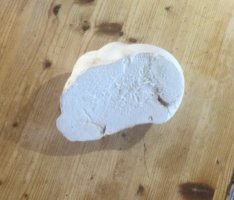not called Bob
Member
do you ever eat the Salsify? I grow some at the allotment, but, after seeing the flowers and seed heads, I have kind of only ever had it an an ornamentalHi all,
Pilosella caespitosa sounds likely, the only real difference would be flower colour. I love Flax (L. perenne), but it has never persisted in the garden.
This is Salsify* and my Hieracium.
* Apologies for the slippers.
cheers Darrel










